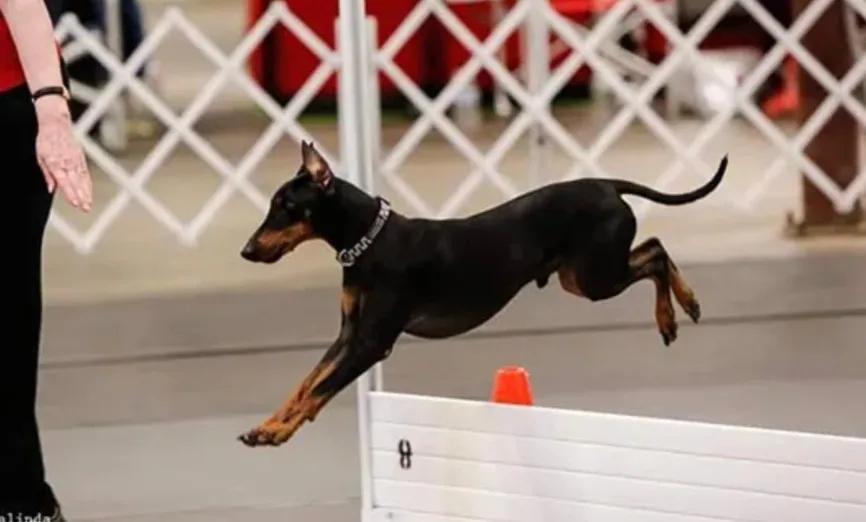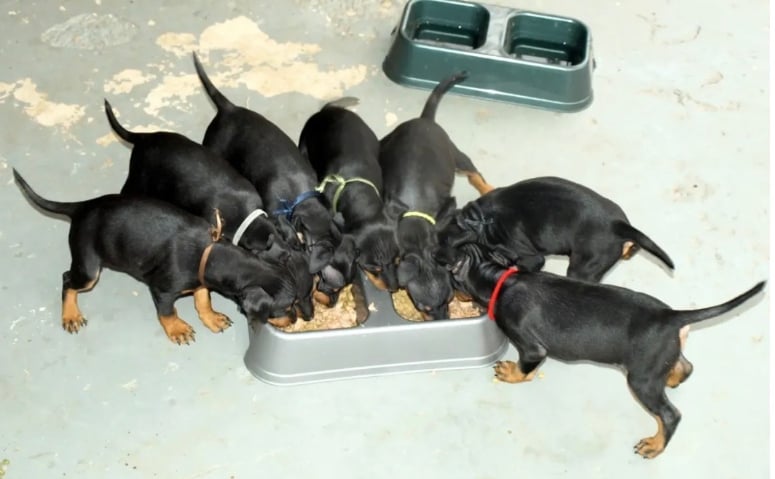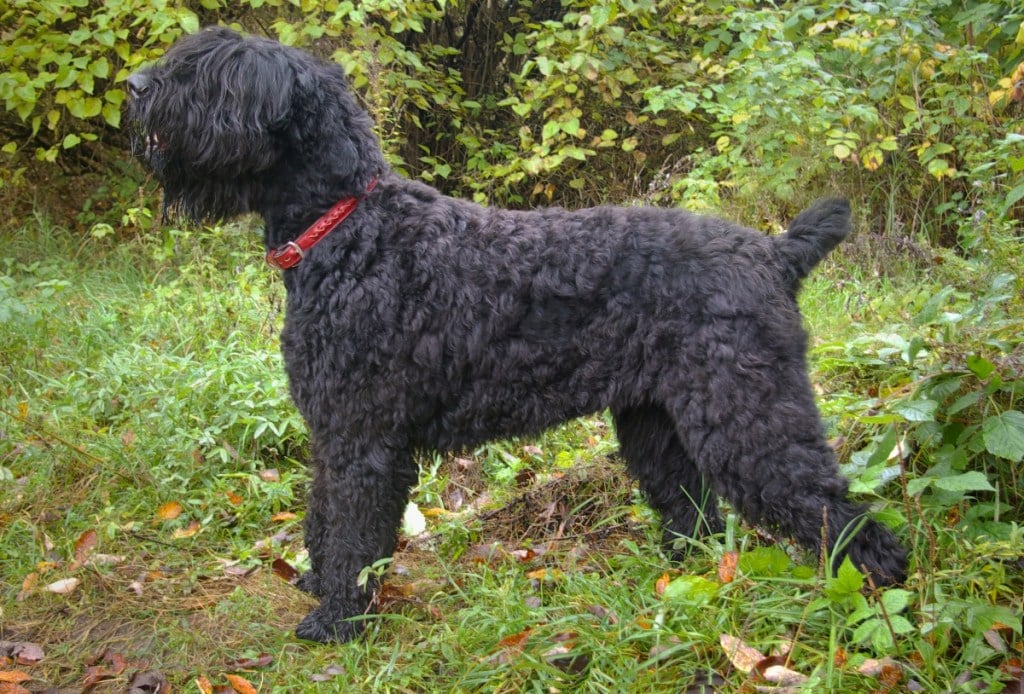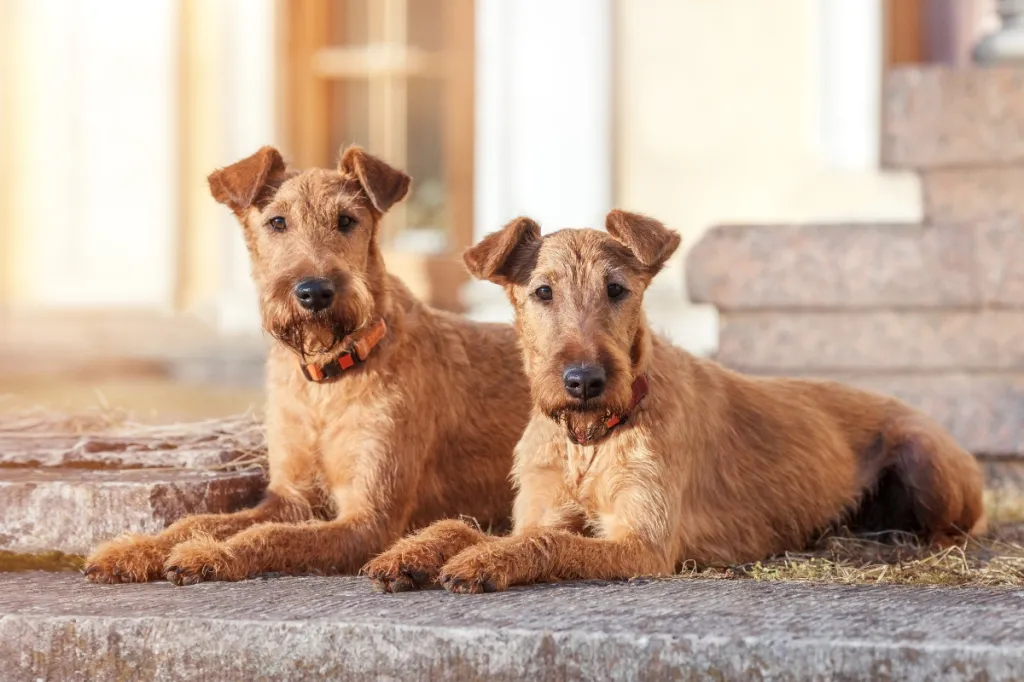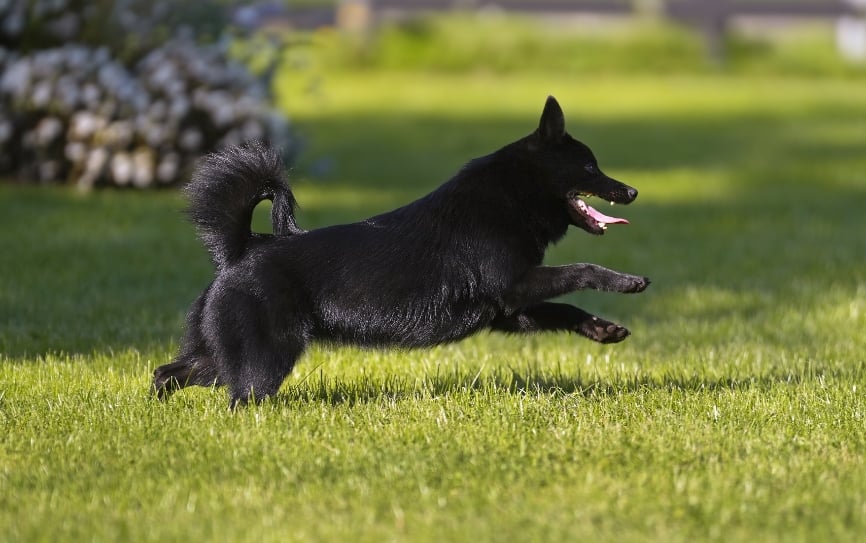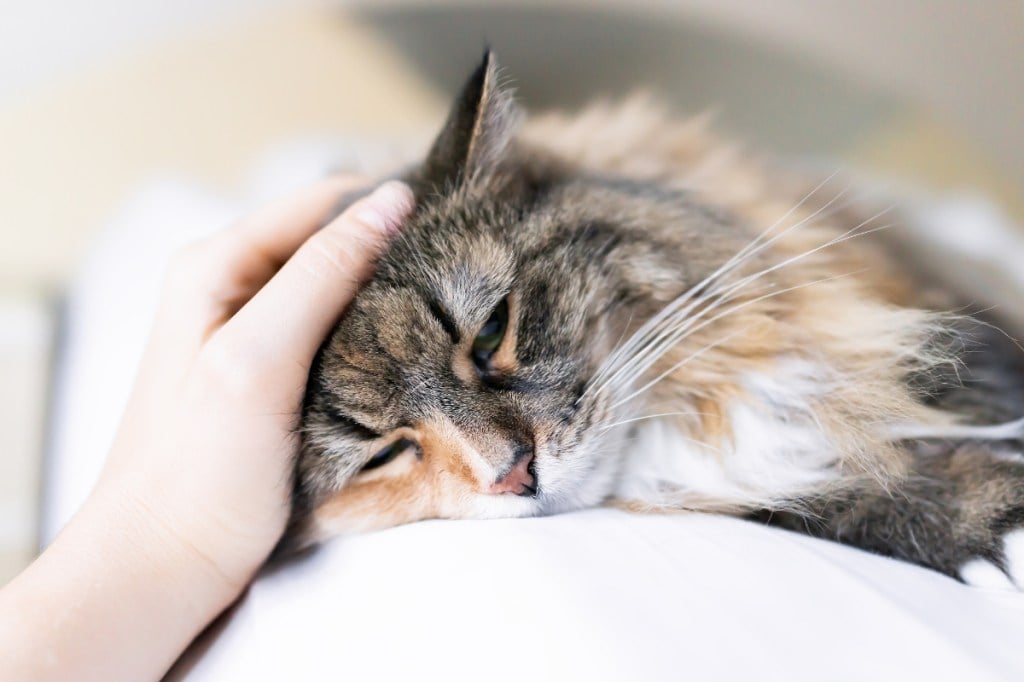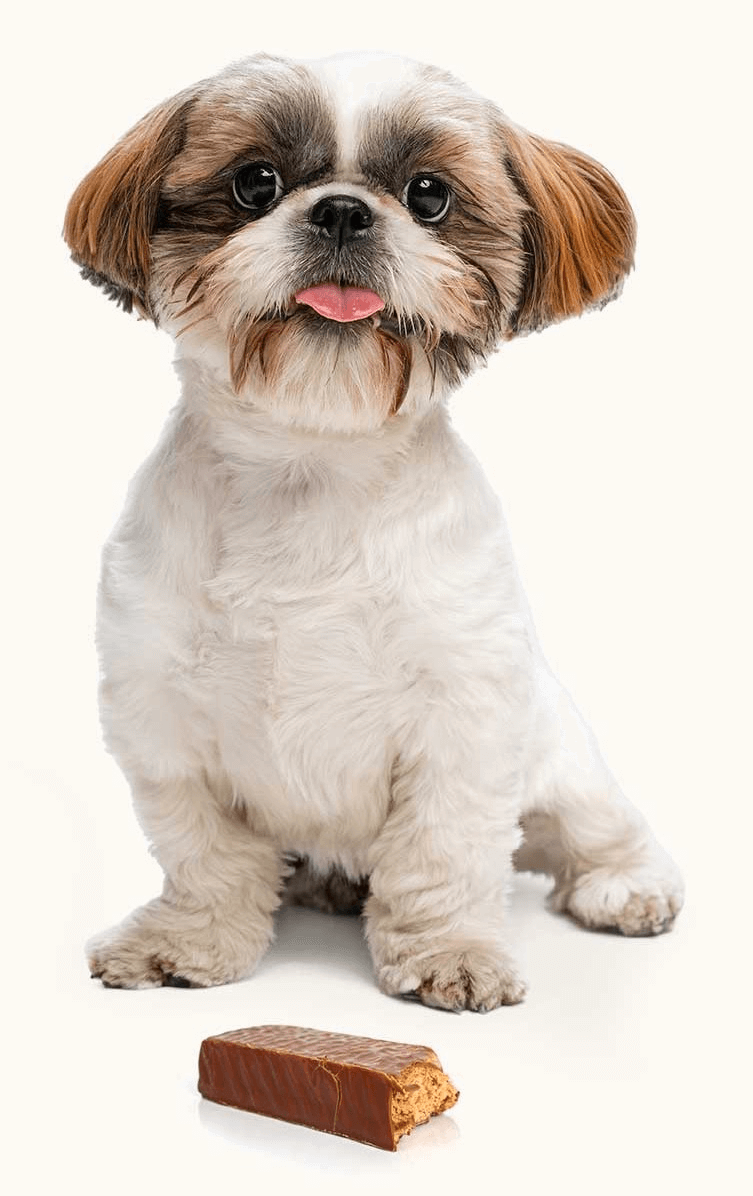Introduction to Manchester Terriers
One of the many types of terrier dogs that exist in our world today is the Manchester terrier. This is a smart and spirited dog that originated in Manchester, England.
These dogs were initially used for hunting rats and rabbits, but today, they are fun household members who love playing games and keeping watch over their homes. If you’re looking for a lively, adaptable dog that’s well-mannered and easy to groom, a Manchester terrier might be your perfect dog.
You can learn more about this breed in our Healthy Paws guide, including the Manchester terrier’s temperament, care, health, and insurance needs.
Size of Manchester Terriers
A fully grown standard Manchester terrier weighs between 12 and 22 pounds and stands 15 to 16 inches tall. There are also toy Manchester terriers that weigh less than 12 pounds and stand 10 to 12 inches tall.
There are only slight differences between this breed’s male and female sizes.
Here’s how big you can expect your standard Manchester terrier to get as the dog grows from puppyhood to adulthood:
| Weight Chart | 6 months | 12 months | 18 months |
| Average female and male Manchester terriers | 8 lbs. | 12 lbs. | 14.5 lbs. |
Characteristics of Manchester Terriers
Like many terriers, Manchester terriers love a good chase. They have hunting dog instincts and love chasing a ball and showing off on agility training courses. The physical appearance of a Manchester terrier might remind you of a miniature Doberman pinscher.
Common characteristics of Manchester terriers include loyalty, love of people, and watchdog skills. They are smart and cunning dogs that love to learn.
They want you to notice them, but they aren’t overly demanding of your attention. However, they don’t do particularly well when left alone for long periods and can become destructive and excessively vocal with barking.
As you get to know a Manchester terrier’s personality, here’s what you can expect based on the breed characteristics:
| Breed Characteristic | Level (High, Medium, Low) |
| Affectionate with People | Medium |
| Good with Kids | Medium |
| Good with Pets | Medium |
| Need for Exercise | Medium |
| Energy Level | Medium to High |
| Intelligence Level | Medium |
| Able to Be Trained | Medium |
| Amount of Barking | Medium |
| Amount of Shedding | Medium |
History of Manchester Terriers
Manchester was once the center of English life because the city was a thriving textile destination with many local mill workers. People here loved hunting rabbits for sport and always needed to catch rats that became pests. Breeders worked to create a dog that excelled at both of those things and ended up with the modern-day Manchester terrier.
The Manchester terrier is a cross between the black and tan terrier and the whippet. Standard and the toy Manchester terriers were once registered as separate breeds until 1959. Today, they are considered to be a single breed with two varieties. The American Kennel Club placed the standard variety in the terrier group and the toy variety in the toy group.
Manchester Terrier Standard Information

When Manchester terriers enter dog shows and competitions, they are judged by a set of standards. For example, the dogs should be sleek, sturdy, elegant, and compact. There are no differences between the standard and toy varieties of the breed other than the size.
Here is an overview of the breed standard information for Manchester terriers:
Head:
- Keen and alert expression
- Eyes are nearly black and almond-shaped
- Ears can be naturally erect, cropped, or button style
- Muzzle and skull are equal in length
- Bite is a generally a scissors bite, but a level bite is acceptable
- Powerful jaws
- White and strongly developed teeth
Neck, Topline, Body:
- Neck is slim, graceful, and moderate length
- Topline has a slightly subtle arch over robust loins
- Forechest is moderately defined
- Ribs are well-sprung
- Tail is tapered and moderately short
Forequarters:
- Shoulder blades and upper arm are the same length
- Elbows are close to the brisket
- Front feet are compact and well-arched
- Two middle toes are slightly longer than the other toes
- Dewclaws may be removed
- Pads are thick
- Toenails are black
Hindquarters:
- Thighs are muscular, with upper and lower lengths about equal
- Stifle is well-turned
- Hocks are well let down
- Dewclaws may be removed
- Hind feet are cat-like with thick pads and black nails
Coat:
- Short, dense, smooth, tight, and glossy
Color:
- Jet black with rich mahogany tan
- Well-defined lines of color
- Black thumb mark patch on the front of forelegs at the pastern
- Outside of the hind legs is black
- White anywhere is a serious fault
Gait:
- Free and effortless with good forequarters reach
- Hocks fully extend
- Rear quarters have a strong drive matching the front
- Legs converge toward the center of gravity during a trot
Caring for Manchester Terriers
Manchester terriers are moderate dogs that need daily exercise to thrive. They are fun to play with and require substantial time and effort devoted to human contact and activity.
Keeping your Manchester terrier entertained and stimulated can be a challenge. So, these dogs are best for pet parents who can commit enough time to them. However, they are very clean and adaptable dogs that do well in many different settings when adequately trained.
Here are some general tips for taking the best care of a Manchester terrier:
Best Living Environments:
- Apartments are fine, with long daily walks
- Homes with a fenced yard for exercise
- Fences are essential due to the high prey drive
- Often match their energy level to that of family members
Type of Exercise:
- Limit jumping and hard surface exercise until one year old to protect the joints
- Playtime in the yard
- Outdoor playtime should be monitored while engaging with the dog
- Walks and runs with family members
- About 30 to 60 minutes of daily exercise needed
Mental Enrichment:
- Keep their minds active with puzzle toys
- Spend plenty of time with your dog daily
- Introduce agility courses and games of fetch
Training Strategies:
- Practice early and consistent socialization
- Socialization reduces fear of strangers
- Expose to children during puppyhood
- Try agility training and advanced tricks
Grooming Tips:
- Relatively low-maintenance dogs
- Brush the coat weekly
- Regular brushing helps prevent excessive shedding
- Bathe only when dirty
- Use a moisturizing dog shampoo to prevent skin dryness
- Brush teeth daily
- Trim nails once or twice per month if not worn down naturally
- Clean ears weekly
Common Health Problems of Manchester Terriers
Manchester terriers are dogs with longevity and typically live 15 to 17 years. But as with all breeds, they are prone to certain health conditions because of their genetics and advanced age.
The national breed club for Manchester terriers recommends the following health tests: ophthalmologist evaluation, thyroid evaluation, von Willebrand disease DNA test, and a cardiac exam.
These are some of the most common health issues that arise with Manchester terriers:
- von Willebrand disease
- Hypothyroidism
- Primary lens luxation
- Progressive retinal atrophy
- Alopecia
- Glaucoma
- Heat bumps
Diet and Nutrition for Manchester Terriers
An adult Manchester terrier needs ¼ cup to one cup of dry dog food daily, depending on the calorie content of the food you select. The portion size depends on whether you have a standard or a toy Manchester terrier and the dog’s age, activity level, and health conditions.
Speak with your vet about the recommended portion sizes and dog food brands to buy.
Where to Adopt or Purchase Manchester Terriers
The American Manchester Terrier Club is the national breed club for these dogs and a resource for reputable breeders. On the organization’s website, you’ll find a breeder referral and tips for selecting a breeder.
To provide a loving home to a Manchester terrier in need of a good family, check out a Manchester Terrier rescue group based on where you live or would be willing to travel to adopt a pet. The national breed club does not foster or rehome dogs but provides resources for contacting a rescue and donating to help dogs on its website.
Related Breeds
The Manchester terrier is an excellent choice if you’re looking for a small, smart, and lively dog. But before deciding to bring a new pet into your life, you might also consider these similar breeds:
- German pinscher
- Black and tan terrier
Pet Insurance for Manchester Terriers
Since Manchester terriers are so active and typically live long lives, it is wise to sign your pup up for pet insurance as soon as possible. Healthy Paws offers Manchester terrier pet insurance that covers new accidents, illnesses, cancer care, emergency care, congenital conditions, breed-specific conditions, alternative care, and more.
Our Manchester terrier insurance plan is straightforward and accompanied by quick claim payouts whenever your dog needs to visit the vet. You can go to any licensed vet or emergency clinic in the U.S. and submit your bills through our website or mobile app.
For your Manchester terrier insurance quote, please visit our website today or contact us at 855-898-8991 for more information.
